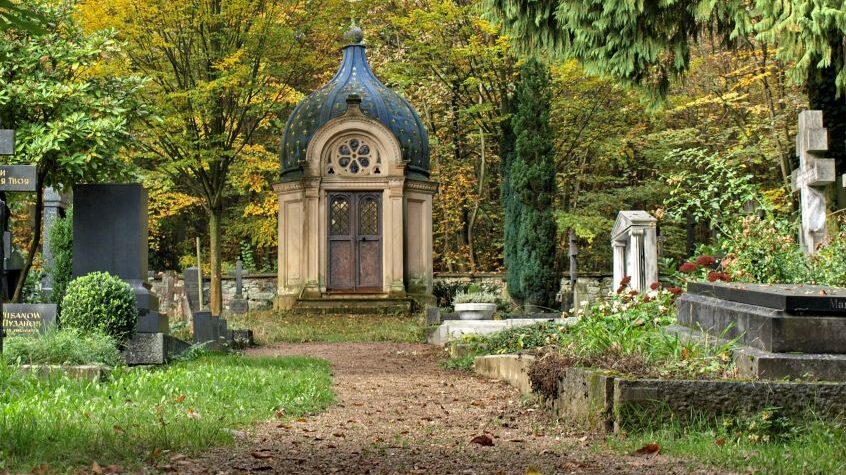Russian Orthodox burial
Russian Orthodox burial
Wiesbaden enjoyed excellent relations with the Tsarist Empire in the middle of the century before last. Like the members of the Hohenzollern dynasty, the Russian nobility enjoyed spending their summers in Wiesbaden's salubrious climate. This glamor was the beginning of the cosmopolitan spa town's reputation, which also attracted artists such as Alexei von Jawlensky and writers such as Fyodor Dostoyevsky. The ties became even closer when the Russian Grand Duchess Elisabeth Mikhailovna Romanova agreed to marry Duke Adolph von Nassau in 1844.
A popular and affable monarch who particularly promoted the spa facilities and railroad connections and contributed to Wiesbaden's economic upswing. However, his young wife died just one year later at the age of 19 at the birth of their daughter together with their child. In her memory, the widower had the Russian Church (also known as the Greek Chapel) on the Neroberg built as a tomb for 1 million roubles from the dowry of the deceased tsar's daughter, which has since become a landmark of Wiesbaden visible from afar with its gilded onion domes.
In 1856, Grand Duchess Helene, the mother of the deceased, gave the impetus for the establishment of a Russian cemetery in Wiesbaden. The Princess herself financed half of the estimated costs of around 2,500 guilders, while the Russian Ministry of Finance contributed the other half. The Duke of Nassau provided the land. Consequently, Phillipp Hoffmann, who had already been responsible for the construction of the Russian Church, was recruited to plan the complex, as the most harmonious possible connection between the two places on the Neroberg was absolutely essential.
Hoffmann designed the cemetery complex in the shape of a cross with rounded corners, the area was enclosed by a brick wall and the gate was crowned with a gilded Russian cross. The Russian cemetery in Wiesbaden was officially opened on August 31, 1856. A small burial chapel was added to the site in 1861, and just two years later the site had to be extended for the first time. The last expansion took place in 1977. There are only two Russian Orthodox cemeteries outside of Russia - one in Baden-Baden and one in our state capital, although the site in Wiesbaden is far more important in terms of history and size.
